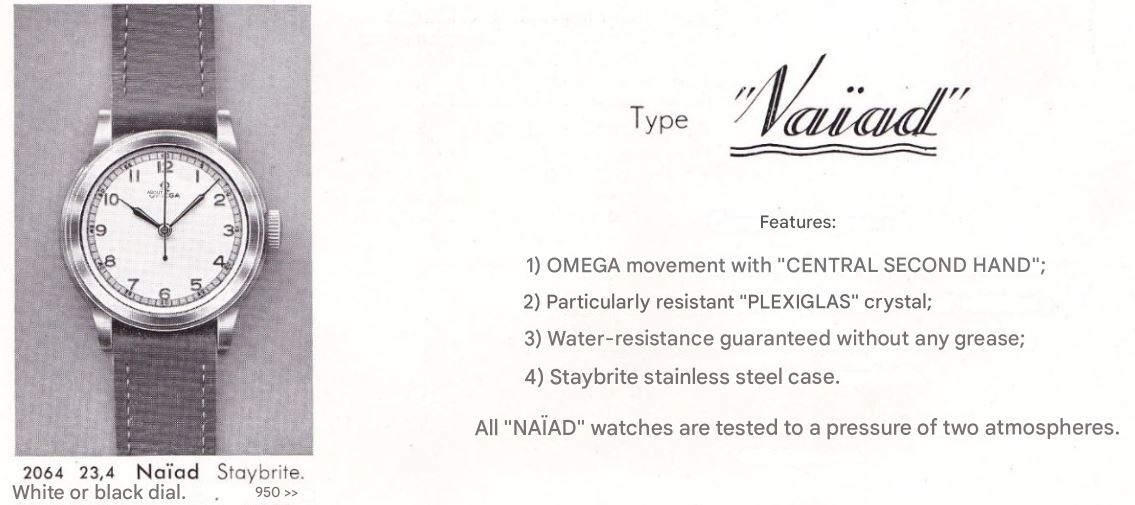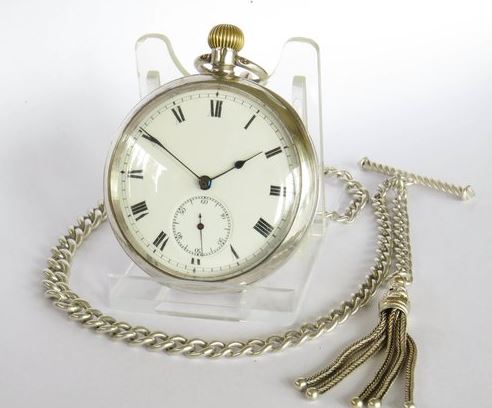Introduced in 1937, the Omega Medicus was a deliberate response to a critical professional need, revolutionising medical timing with its central sweep seconds hand. It is not a well-known timepiece, and the name “Medicus” seems to be a nickname applied to the watch. The name itself never appeared on the dial of the watches or in any advertising material. Although we have never seen a Medicus first-hand, the name caught our attention, and this post contains what we have learnt after our research.
A brief history of Omega
Louis Brandt founded Omega in 1848 when he opened a workshop in La Chaux‑de‑Fonds. He assembled key‑wound pocket watches from local parts. After he died in 1879, his sons moved the company to Biel/Bienne. There, they modernised production and centralised manufacturing. In 1894, the Brandt brothers introduced the “Omega” movement with interchangeable parts and excellent timekeeping. Its success led the company to adopt “Omega” as its official name in 1903.
Omega expanded rapidly in the early 20th century and became the official timekeeper at the Olympics from 1932. The company created precise wristwatches, marine chronometers, and pilot watches. It supplied military timepieces during both World Wars. In 1957, Omega launched the Speedmaster, Seamaster, and Railmaster ranges. The Speedmaster became the first watch on the moon in 1969 after NASA’s rigorous tests. During the Quartz Crisis in the 1970s and 1980s, like many Swiss watchmakers, Omega struggled to compete with Japanese quartz prices. The brand’s prestige suffered, and the Swatch Group absorbed Omega in the late 1980s. (Omega at Watch Wiki).
The “Doctor’s watch”
The typical pocket watch layout, which featured a small subsidiary seconds dial at the 6 o’clock position, inspired early wristwatch designs. It is rare to find a wristwatch made by any manufacturer before 1935 that employed a centrally pivoted second hand (also known as a “centre second”). When this centre second arrangement was offered by a watch manufacturer, it was nearly always advertised in their catalogues as being especially suited for the medical profession. Otherwise known as a “Doctor’s watch”, the large, centrally mounted second hand was ideal for timing a patient’s heart rate over sixty seconds. A small sub-dial was extremely difficult to read quickly, particularly in poor lighting. In contrast, the centre second hand made measuring short time intervals perfectly clear at a glance.
The origin of the Medicus
In the 1930s, watches typically displayed a sub-seconds dial. This had been adopted from pocket watches. The Omega Medicus was the brand’s first wristwatch to feature a central seconds hand, making it bigger and easier to read. This was particularly useful for the medical profession to accurately measure pulses. It was used during the Second World War and became known as the “nurses’ or doctors’ watch”. The name “Medicus”, which is Latin for “Doctor”, never actually appeared on the dial of these watches.

According to the official Omega website, the Medicus was also groundbreaking in another respect. It was the first watch in the world whose wrist straps were secured with fixed central attachments. We are not sure if this was a marketing ploy, but of the Medicus watches we have seen, most have used traditional, thick-set lugs with leather straps. (A life saving detail at Omega).
The Omega 23.4 SC
Omega introduced the Medicus in 1937, featuring the 23.4 SC manual wind movement. Most of the important Swiss watchmaking houses introduced a centre seconds model to their ranges between 1932 and 1935. However, subsidiary seconds dials still remained the norm for most of their production until the late 1940s. Omega was relatively late in launching a centre seconds movement, creating the 23.4 SC in 1935. The “SC” represents “Seconde au Centre”. The watch remained in production until 1949. Omega manufactured a total of 120,100 of these movements. The 23.4 was also available with the traditional subsidiary seconds format.

The Ranfft database, lists the Omega calibre 23.4SC as a manually wound movement. It featured a Swiss lever escapement, 15 jewels, a bi-metallic compensation balance, a power reserve of 43 hours and a frequency of 18,000 vph. Most of the Medicus watches used the 23.4 SC movement. However, some rare examples included the Omega R17.8SC / AM (anti-magnetic) movement.
Case design
The Medicus case was typically manufactured from Staybrite stainless steel with a press-in case back. Omega made rare versions from solid gold (e.g., 14k gold). The diameter of men’s watches in the 1930s was considerably smaller than that of modern watches. The Medicus had a diameter ranging from 30.2mm to 31mm. Although a notable and highly sought-after variant included a “jumbo” size, reaching approximately 35mm. These larger dimensions were unusual for the era, but crucially, they improved dial readability, which was important for its medical purpose. The most common case shape was round (CK2175, CK2015 and CK605). However, rarer versions were available in square cases (CK651).
Omega designed the dial for precision timing. It featured a “technical dial” with a railroad minute index that was further subdivided into fifths. This allowed for highly accurate readings, essential for pulse monitoring. The watch was equipped with distinctive blued steel diamond-shaped hour and minute hands, which provided excellent contrast against the dial. The most defining visual feature was the full-length blued steel sweep seconds hand, often with a small counterbalance on its end. This allowed clear and continuous tracking of seconds across the entire dial. Omega infilled the black printed Arabic numerals with luminous material to ensure optimal visibility in difficult lighting conditions. The crystal was Plexiglass, a type of acrylic. The unsigned crown was typically larger than crowns of the period, making it easier to wind and to adjust the time. In some instances, the crown was slightly recessed into the case, giving a slimmer profile.
Medicus Naiad variants
The “Naiad”, launched in 1937, was Omega’s first “standard” waterproof wristwatch. The female spirits of Greek mythology were the inspiration for the name. The Naiads were water nymphs who lived in fountains, wells, springs and streams. The Omega Naiad had a snap-on “forte pressione”(strong pressure) waterproof case back. The winding stem entrance into the case was made waterproof by a crown with internal gaskets. The Naiad case was often marked on the case back as “Waterproof” and “Mod. Depose” (registered design).
The Naiad crown was designed to seal tighter with increasing water pressure. In theory, this was a good idea, but it meant that water resistance was actually less at shallower depths. In 1926, Rolex lodged a patent for a screw-down crown for the Oyster case. This effectively blocked other watchmakers from copying this technology for twenty years. The Naiad was Omega’s solution to this problem. Rather than the screw down design of the Rolex Oyster, the Naiad crown used a “sealing gasket” in the crown, which sealed against the stem tube. Collectors often refer to these as “variants, because they pair the Medicus model’s centre‑seconds calibre 23.4 SC with this early waterproof feature (The 1937 Omega Naiad at Vintage Watchstraps).
A “Medicus Naiad” variant refers to specific Omega Medicus models, such as the CK 2064, that feature a water‑resistant “Naiad” case. These were among the very first waterproof cases that Omega offered, rated to about 30 metres (3 atmospheres), making them far more durable than typical dress watches of the period. The Naiad solution was later adopted by the Omega Seamaster range.
Marketing
Interestingly, neither Medicus nor Naiad ever appeared on the dial of an Omega watch. If anyone knows differently, please let us know in the comments below. We have also not seen the “Medicus” name used in period advertising by Omega. However, it references the name on the official Omega website. Perhaps the “Medicus” was more of an informal brand name? However, the advertisement below shows the “Naiad” name in use in period advertising.

Interestingly, the advertisement promotes the water-resistance of 2 atmospheres, as opposed to the 3 atmospheres on the official Omega website. It doesn’t make a huge difference either way. The watch is splash-resistant rather than truly waterproof.
Summary
Vintage watch collectors consider the Omega Medicus to be a highly respected timepiece. Its rarity is a primary draw. The total production figures for the broader 23.4 movement range (120,100 movements over its production life ) might seem substantial. However, the specific Medicus model, with its unique central seconds and medical purpose, represents a much smaller subset of that production. At the time of writing, the Omega vintage watches database only lists 13 watches specifically under the 23.4 SC calibre. This indicates the relative scarcity of the Medicus variants in the market.
The Medicus is valued as a purpose-built tool for medical professionals that earned it the affectionate nickname of the “Doctor’s watch”. Watch enthusiasts also widely respect its 23.4 SC movement because it offered accuracy and reliability.

Leave a Reply